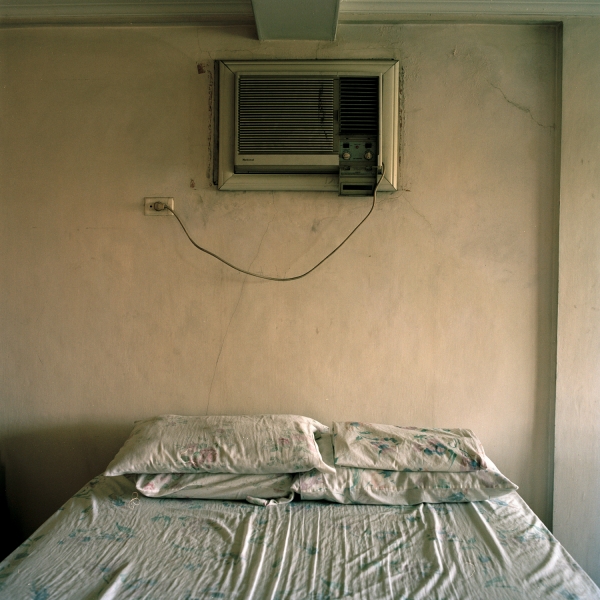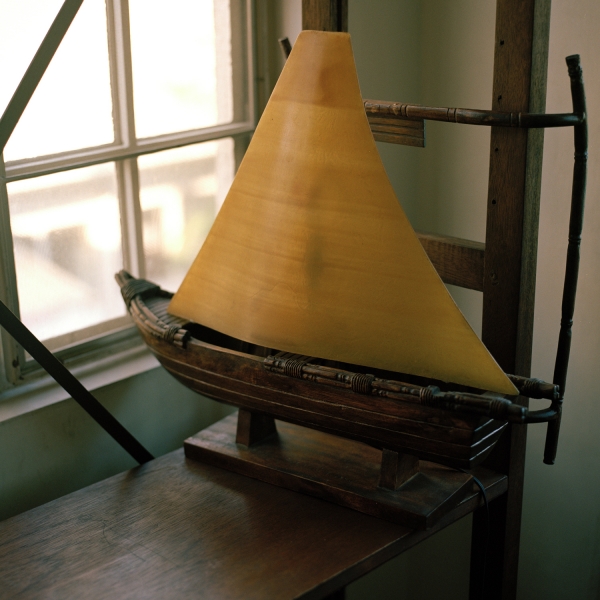Le Printemps, 2001
Elina Brotherus, born 1972, Helsinki, Finland is an artist that I keep a close eye on, just to see what new material she is creating. For me, the work she has continued to produce over the past decade and longer have been more than exceedingly good, putting her in the forefront of contemporary artists working with photography.
I was first exposed to Brotherus’s The New Painting (2000-2004) series, work that really does force the viewer to analyse the photograph in front them in the way you would do a painting. Brotherus’s says this about the work ‘Photography is the new painting, said my friend Edda Jonsdottir, director of i8 gallery in Reykjavik. With this somewhat provocative sentence in mind in June 2000 I start my still on going series, “The New Painting”. I use contemporary means of expression (large format colour photography), but I owe a lot to the aesthetics of classical figurative painting. With the camera I try to approach the same problems that painters have been dealing with for centuries: light, colour, composition figures, in space, projection of the three-dimensional in the two-dimensional. I find these questions fundamental in all visual arts.’ (Elina Brotherus, 2001)

Elina Brotherus is known for including herself as the model in her photographs. Older works focused more on the inclusion of her in the photographs, the emphasis on self-portraiture, identity and the problem with representing oneself. Again she is seen within the photograph but she describes that it now presents this person (often times her) as ‘an object of investigation, not for the inner properties but for the external ones. The person in the picture is a model, in the same sense as painters have been using models.’ She questions how figures interact with space and with each other, and how light reveals the body form.
The next extract is from Elina Brotherus’s website, where she discusses what has motivated her to produce The New Painting.
The colours of a photographic print are not given; the “correct” answer is not hidden in the negative. It is surprise how much can be done in the darkroom. Chosen the colour of the sky can be just as arbitrary as choosing among pigments of oil paint. This came like a revelation to me when working on the The New Painting. All there is, is a vague impression of “how it was” on the location, and a choice that has to be made by the artist when printing. This is why I have started to take notes, in the spirit of Bonnard, in order to remember what things looked like.
Photography, unlike painting, has a direct link to the reality. This is both its enchantment and its curse. People tend to treat photographs as documents: who is this person, or where is that place? I would prefer that we pay more attention, not only to the subject matter itself, but to how it is shown: what visual choices has the artist made, how has he/she solved certain problems, what is the structure of the image, the mood of it, how are the colours tuned? How does it affect us as viewers?
I am attracted to the work of Elina Brotherus, for one, the images are visually pleasing, they open your eyes to what she is trying to portray, and she also understands the loss of power and control to the audience. Her work searches for the beauty in the landscape just as paintings did/do and it establishes the photograph as a valuable art form, very much like Wolfgang Tillmans valuing the photographs place within the museum.

Der Wanderer 4, 2003
Nu Endormi, 2003
Der Wanderer 5, 2003
I was very interested in the way Brotherus worked portraiture and the focus on body form into the landscape with care on beauty and pose. When I had begun working on the work now called Transient Bodies, my motives were based on the relationship with the individual and the landscape as one, but it tried to connect the too to make this aesthetically pleasing image that opted to consider the beauty of landscape photography such as the works of Ansel Adams and the portraiture of Bill Brandt.
Der Wanderer 2
Der Wanderer, 2003
Orage Montant, 2003
Very Low Horizon, 2001
Broken Horizon, 2001
Figure au Bord de L’eau, 2002
There is so much beauty in this photograph to read from, the beauty of the landscape, the beauty of the figure. You want to know what he is looking towards, what has brought him to this raw unmanufactured landscape. I had not seen this image before I started to work on ideas of my own, but this would have certainly inspired the work I wanted to produce. It is inspiring me right now in fact, such beauty and craft.
Baigneuse de Saturnia, 2003
All images shown here are taken from Elina Brotherus's book The New Painting, all copyright goes to the artist and publishers, if you are interested in Elina Brotherus and the work she produces visit her website here













































